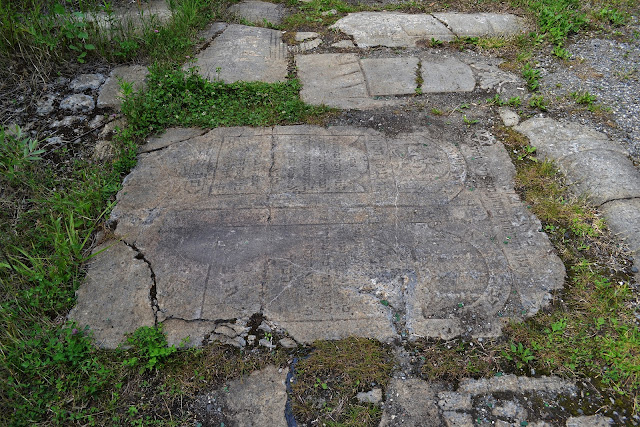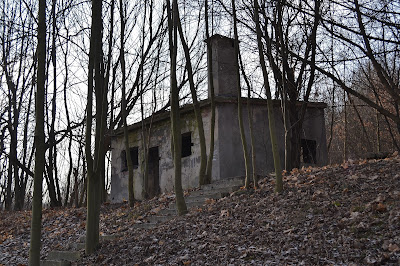Chasing the Ghosts of World War Two in Krakow
One of the astonishing things I found when taking those first few tentative steps beyond the Iron Curtain in 1990 was how much of Eastern Europe was still scarred from World War Two. Remnants were everywhere - from abandoned concentration camps - to buildings in major cities such as Berlin, Warsaw and Budapest still pockmarked with bullet and shrapnel holes.
For visitors to Kraków who are interested in this period of history, there are still some raw remnants you can unearth if you know where to look.
My first recommendation is not far from the Old Town and resides within the Silesian House (Dom Śląski). This building on ulica Pomorska 2 was the headquarters of the Gestapo during the Nazi occupation and was where civilians were interrogated and brutally tortured. The building now houses an excellent exhibition entitled "People of Kraków in Times of Terror 1939 - 1945 - 1956" (the later date referring to terror during post war Soviet occupation). It consists of informative archives, photos, evidence and film. However, creepiest and most poignant of all is that in the basement, the visitor can visit the interrogation cells which still bear inscriptions on their walls scratched by the desperate detainees. A visit here is thought provoking journey away from the tourist hordes of the main square.
The Kazimierz Jewish district itself can be viewed as one huge WW2 remnant in that it's inhabitants were all decanted from the area to the ghetto across the river, and then ultimately to the gas chambers of Auschwitz. Lots of evidence of the area's former inhabitants can be seen everywhere. Try looking for the marks left by Mezuzah Scroll boxes on the right door post of the buildings in the area. These indicate that former owners were Jewish and that they never returned to these buildings. These scrolls were housed in a box and consist of the most famous Jewish prayer - the Shema. Usually hand written by an expert scribe, it is a symbol of God watching over the house and it's dwellers. On entering the house, the inhabitants touch it and kiss their fingertips.

A few other memorials can be found in Kazimierz reminding us that many of it's former civilians never returned to their homes after the war because their lives had been snuffed out.
Remembering the inhabitants taken away and never to return
Signs of former Jewish community life are everywhere - note the stars of David on this former Torah Prayer house
Holocaust Memorial
This holocaust memorial can be found in the New Jewish Cemetery on ul. Miodowa 55–58. Family memorial plaques to lost loved ones also adorn the walls.
Across the river in the Podgorze District, this building on ul Piwna can be seen still bearing the bullet holes from fierce fighting during the war.

These empty seats in the picture below on Plac Bohaterów Getta in Podgorze symbolise the lost souls who were brutally murdered on this very spot when the ghetto was liquidated and its inhabitants taken to Auschwitz.

These empty seats in the picture below on Plac Bohaterów Getta in Podgorze symbolise the lost souls who were brutally murdered on this very spot when the ghetto was liquidated and its inhabitants taken to Auschwitz.
Plac Bohaterów Getta
Whilst on this square don't miss the Pharmacy Under the Eagle museum at number 18. This is housed in an original pharmacy which was where the only Polish inhabitant of the former ghetto worked. He was witness to the terrible mass murder committed on the square outside his windows, but he also helped the Jewish underground movement from this very shop.
Remains of Ghetto wall
Not far from here in Podgorze are two remaining stretches of the ghetto wall which at one time marked out the boundaries of the small area the unfortunate Jewish inhabitants had to exist within in hideously cramped conditions. One stretch is on ul. Lwowska, whilst the other is found at ul. Limanowskiego 60/62. (Click on the Podgorze Page at the top of this blog for more information)
Whilst in Podgorze, do not not miss the wonderful Schindler Factory Museum. This is the real building that Oskar Schindler operated his enamelware business from which was immortalised in the Speilberg film "Schindler's List".


The Schindler Factory in 1990
Today the interior now houses a wonderful museum dedicated to life in Krakow under occupation. Some of this is dedicated to the story of the Schindler Jews, but the bulk of the exhibits deal with the onset of war and what it was like to have to try and live under the Nazi jackboot and the subsequent Soviet occupation.
Lime works in the Liban Quarry
The Liban Quarry
Leaving Podgorze, one can find the Liban Quarry. This was a quarry before the war but after the Nazi invasion it became a brutal forced labour camp. The tangle of original rusting limeworks still exist to this day. This area also retains the remains of the film set built here for "Schindlers List" including concentration camp fences and a road made up of smashed up Jewish gravestones.
Road made of smashed up Jewish head stones from Schindler's List
Very close to the Liban Quarry is the vast area of wasteland on the edge of the city which was at one time Płaszów Concentration Camp. This can be accessed by walking along the main Wielicka road where the best approach to the camp is along ul. Jerozolimska.
The creepy Grey House SS Headquarters
SS Torture cells under the Grey House
Don't miss the Grey House at the entrance which at one time was the SS quarters complete with torture cells beneath it. It was said that anyone entering them never came out under their own stream.
Close to the grey house is the so called Red House found at ulica Jerozolimska 22. This was the villa of the notorious camp commandant Amon Goethe. At present it is undergoing some refurbishment.
Commandant Amon Goethe's Red House
Commandant Amon Goethe's Red House
Amon Goethe
The large Plaszow Concentration Camp remains stretch out beyond this street with scattered traces of building foundations, memorials and mass graves.
Płaszów mass grave
Mass hangings at Płaszów - www.krakow.colindaylinks.com
Ruined camp buildings - Płaszów
Camp guard house - Płaszów
Of course the biggest and most notorious WW2 relic has to be Auschwitz/Birkenau. Easily accessed by public transport or as part of an organised tour, this notorious and horrendous relic of the war is not to be missed.
Auschwitz/Birkenau
Auschwitz Museum
Belongings of the dead - Auschwitz
An area of the city that is often ignored by tourists is the wonderful Socialist Realist district of Nowa Huta. Amazingly, parked up on os. Gorali 23 is an IS-2 Tank that was used in the Battle of Bautzen in 1945.
IS-2 Tank - Nowa Huta
Despite still being within the urban confines of Krakow, the next WW2 "relic" is perched on a crag to the west of the city on a large forested hill called Las Wolski. This is Przegorzały Castle and in the 1940s, during Nazi invasion, was the residence of Baron Otto von Wächter. He was a Nazi, member of the SS and was appointed as the Governor of the District of Krakow. Evil Otto had this castle constructed for himself in the style of German Rhineland castles. It certainly is an imposing sight dominating Skałki Przegorzalskie (the name of the crag it hugs).
Przegorzały Castle




































This is a great article with fantastic photos.
ReplyDelete